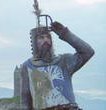Jim D Burns
Posts: 4013
Joined: 2/25/2002
From: Salida, CA.
Status: offline

|
quote:
ORIGINAL: Andrew Brown
That is a start. But what about the other part of my comment? What does PzB control in the game vs what the Japanese controlled in RL?
As I mentioned in a previous post, it doesn’t matter. Japan’s resource stockpiles dwindled from the start of the war and never grew in any significant amount. Yet they still managed to increase production over time even though their available resources had dwindled. Ramping up production was the choke point, not resources to feed the industry.
As you can see from this list, they managed to roughly double fighter production each year until allied bombers crashed their industry in 45.
………………. Fighters………. Bombers………. Recon………. Trans………. Trainers
1941………. 1,080…………… 1,461.............. 639…………… unk…………. 1,489
1942………. 2,935…………… 2,433.............. 967…………… unk…………. 2,171
1943………. 7,147…………… 4,189.............. 1,046………… unk…………. 2,871
1944………. 13,811………… 5,100.............. 2,147………… unk…………. 6,147
1945………. 5,474…………… 1,934.............. 855…………… unk…………. 2,523
If you look at their total air frame production, you can see their best year managed to double production, but most years saw only about a 50%-60% increase over the previous year’s production.
1941………. 5,088
1942………. 8,861
1943………. 16,693
1944………. 28,180
1945………. 8,263
The ability to ramp up production should not be dependent on resources. Ramping up difficulties were similar across the board. US production also roughly doubled each year (they had the most modern production techniques so they were the most efficient of all nations), here’s their total air frame numbers:
1941………. 26,277
1942………. 47,836
1943………. 85,898
1944………. 96,318
1945………. 46,761
As you can see they significantly cut back production increases after 1943 after the air war had been won over Germany. And by 1945 they were back to 1942 production levels, they simply dominated by then and didn’t need the numbers anymore.
The problem in game is Japan can ramp up his production to about 1500 air frames a month by February or March of 42 and by the end of 42 he’s well over 2000.
Historically Japan didn’t even build more than 1,000 air frames a month until 1943. So by 1943 Japan has built well over 20,000 air frames for his 1942 production when historically they had only built 8,800 (6,000 without the trainers).
Gearing up industry to such high levels so fast simply couldn’t be done. It took a long time to gear up and doubling production each year was a major achievement. I doubt Japan could have done much better than they did historically even had they taken all of India and Australia.
Slave labor at those captured aircraft factories in India and Australia would have added some thousands of air frames a year, but no way could they have done better than perhaps 10%-20% more frames a year than they achieved historically.
quote:
ORIGINAL: Andrew Brown
is that number equal to the number of aircraft actually produced, or it is the potential production if there are sufficient resources, oil, HI and engines?
You’d have to ask PZB, but most good Japanese players easily produce more than 3,000 air frames by 1943 without crashing their economies.
quote:
ORIGINAL: Andrew Brown
Furthermore, while this is a useful data point, is this a normal result or an "outlier"? Or to put it another way - is it that the production output from the Japanese in the game is higher than it was for an equivalent extent of controlled resource extraction and production (i.e. equivalent areas conquered)? Or is it that if the Japanese do better than historically the production increase is greater than it should be? (or both, or neither?)
Production is far over the top from 7 Dec. 1941 onwards. Japan can sit and do nothing after taking the SRA and build hundreds of thousands more air frames than they historically did.
Your thinking is backwards here. You have to start Japan from an historically accurate point and allow it to expand a bit from there if they do better than they did in history. Compiling tons of data from flawed fantasy battles fought over the past years is worthless, because the Japanese economy is so far over the top it has no basis in reality to begin with.
What’s needed is to cut their production ability by about 75% of current levels. Start from there and try and figure out a way where at best they can do better than slightly doubling their production each year and you’ll have an historically accurate model.
Then you can tweak the different allied bases that have industry in them to allow some expansion but not so much that they out-produce the allies as they do now, which could never have been achieved even if Japan took everything west of California.
Jim
< Message edited by Jim D Burns -- 1/9/2008 2:24:45 PM >
_____________________________
|
 Printable Version
Printable Version

 the very first turn we play WitP we throw away history of real WWII and create our own...
the very first turn we play WitP we throw away history of real WWII and create our own... 






















 New Messages
New Messages No New Messages
No New Messages Hot Topic w/ New Messages
Hot Topic w/ New Messages Hot Topic w/o New Messages
Hot Topic w/o New Messages Locked w/ New Messages
Locked w/ New Messages Locked w/o New Messages
Locked w/o New Messages Post New Thread
Post New Thread